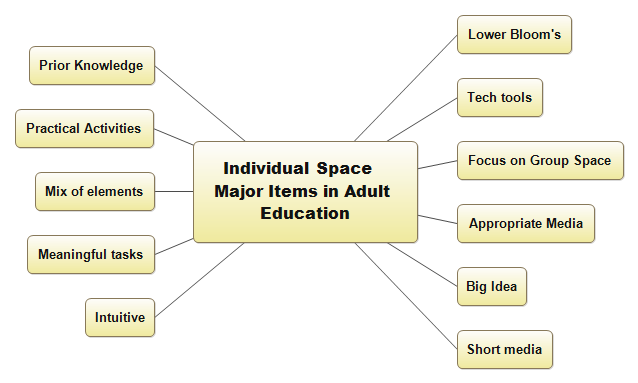Flipped Learning has been defined as a pedagogical approach (in 2012) by the Flipped Learning Network (which has been established by several teachers). Their definition of Flipped Learning is:
The pedagogical approach is based on four pillars (Click on an item to read more):
Flexible Environment ![]()
Learning Culture ![]()
Intentional Content ![]()
Professional Educators ![]()
Source: Flipped Learning Network (FLN). (2014) The Four Pillars of F-L-I-P™, Creative Commons CC BY-NC-ND License, see https://creativecommons.org/licenses/by-nc-nd/4.0/)
Development of Flipped Learning
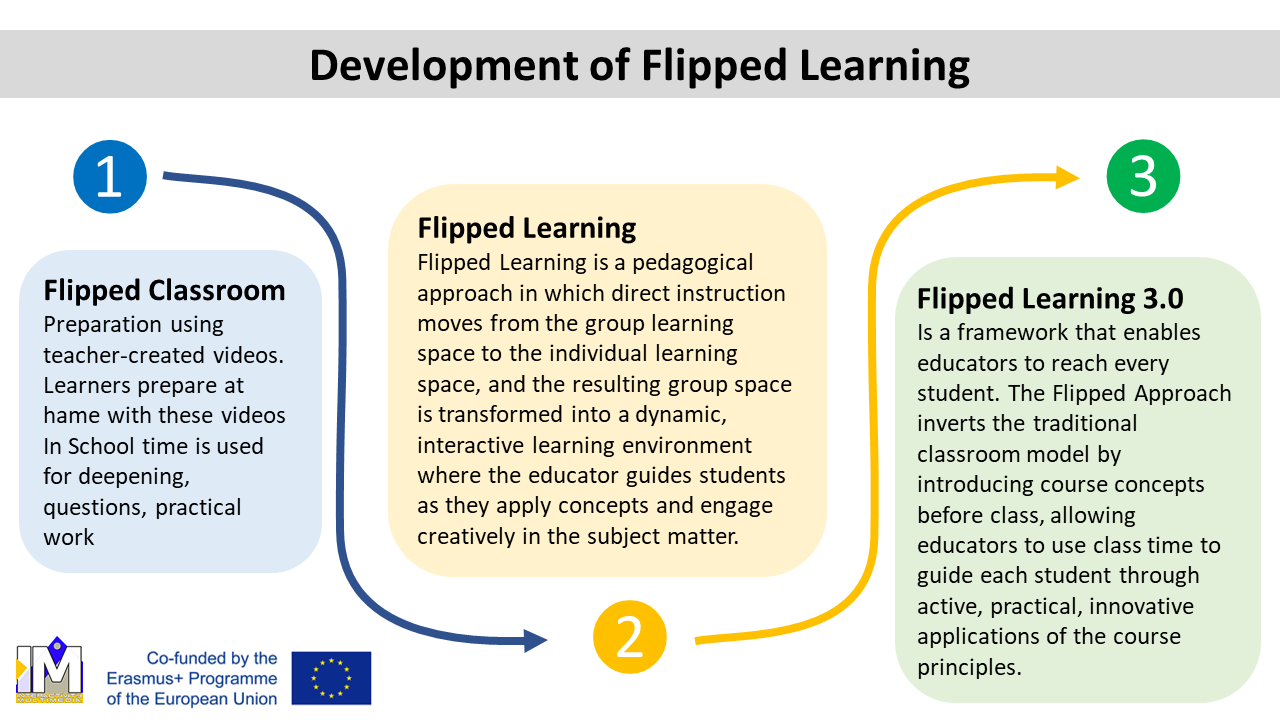
This depiction visualizes simplified the development of Flipped Learning 3.0 out of the idea of the Flipped Classroom. (Source: InterMedia Erasmus+ Project, Peter Mazohl)
Flipped Learning 3.0
Flipped Learning 3.0 describes the modern pedagogical approach to the original version of flipped learning”. It is a further developed methodology of flipped learning and is based on learner-centered and active learning. The flipped classroom and flipped learning have been developed from the K 12 system (this describes the school system in the United States covering the typical school career from 6 years old pupils to 18 years old students, covering 12 years of learning).
Flipped Learning 3.0 is a versatile pedagogical approach that can be used in all fields of education (School Education, Higher Education, Vocational Education and Training as well as Adult Education).
The definition is given by AALAS
Flipped Learning 3.0 is a pedagogical framework. A pedagogical framework creates the structure around the philosophy of learning and teaching. A set of guidelines enables teachers to evaluate and refine their practice. It represents a consistent and commonly shared approach and will support teachers in the development and transfer of high-quality learning and teaching based on best practice research and relates it to the most effective way that students learn.
In any case, the Flipped Learning 3.0 Framework is as versatile as possible. It can be implemented in all kinds of learning. Primary, developed for School Education, it is finally a comprehensive model used in Higher Education (HE) as well as in Vocational Education and Training (VET). The experience of the “Flipped Adult Education” Project showed little broadening or knowledge in Adult Education.
Infographic: Major items describing Flipped Learning 3.0 (Source: InterMedia Erasmus+ Project, developed by Peter Mazohl using CANVA)
Basics of the Flipped Learning 3.0 Framework
Flipped Learning 3.0 is currently using the 187 Global Elements of Effective Flipped Learning. These elements are organized and structured in 12 sectors (the core items of effective flipped learning). These families are (ordered in relevance for Adult Education) the Group Space Mastery, the Individual Space Mastery, Learning Spaces, Student Feedback, Assessment, Communication and Culture, IT Infrastructure, Professional Development, Planning for Flipped Learning, Understanding Flipped Learning, Evidence and Research, and K-12 Focused.
Errol St.Clair Smith (from the FLGlobal) has developed a graphic depiction showing the twelve sectors in a colored wheel.
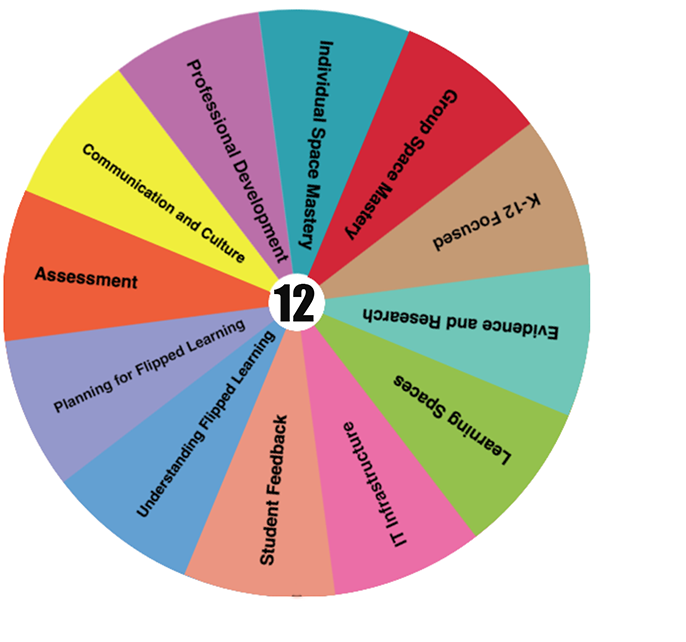
This colored wheel shows the different 12 sectors of Flipped Learning 3.0 (Source: Errol St.Claire Smith 2), FLGlobal).
Bloom’s Taxonomy as a starting point
Flipped Learning uses the Revised Bloom’s Taxonomy that uses verb forms (for the terms defined by Bloom in 1956 1)) since 2001. The taxonomy of learning objectives according to Bloom et al. (1956) provides a good orientation for grading tasks according to the level of difficulty and offers a variety of possibilities for differentiation. The taxonomy can be used to determine the appropriate cognitive level of the lesson. The currently used revision (2001) uses verbs to express that learners are doing something. These are:
- Remember
Recall knowledge such as terms, facts, procedures, criteria, and symbols (Typical verbs: reproduce, enumerate, name, look up). - Understand
Being able to explain a fact in one’s own words (Typical verbs: describe, explain, explain, clarify, interpret) - Apply
Transfer, use something in another context (Typical verbs: apply, transfer, solve, use). - Analyse
Determine criteria, find fault, point out something special (Typical verbs: analyse, deduce, determine, reveal) - Evaluate
Weighing up and selecting alternatives, assessing a situation based on criteria (Typical verbs: evaluate, judge, decide). - Create
Draw broad generalisations, find other solutions, and design plans or structures (Typical verbs: develop, compose, combine, construct, propose)
The six categories changed from the first approach of Bloom from the terms knowledge, understanding, application, analysis, synthesis, and evaluation to the verbs remember, understand, apply, analyse, evaluate, and create. Please take into account the switch of the fifth item with the sixth!
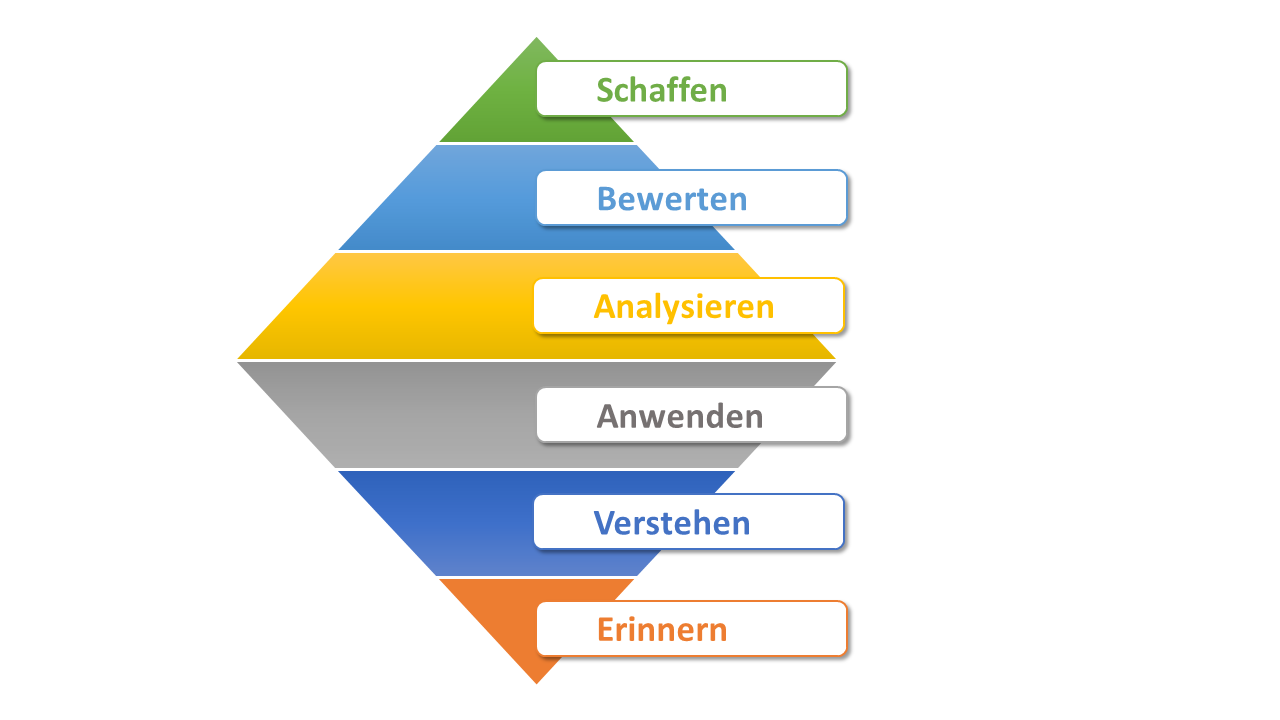
Bloom’s Taxonomy, as it is used in the Flipped Learning 3.0 context (Source: Peter Mazohl, FAdE Erasmus+ Project)
Group Learning Space and Individual Learning Space
The pre-classroom learning focuses on the two categories remember and understand. These are the basics the learner has to bring into the classroom. The higher categories like apply, analyse, evaluate and create are used in interactive and collaborative work in the classroom monitored and guided by the teacher (as a facilitator of the learning).
The big difference between traditional learning and the Flipped Learning 3.0 approach is visible in the next graphic (Example taken from School Education).
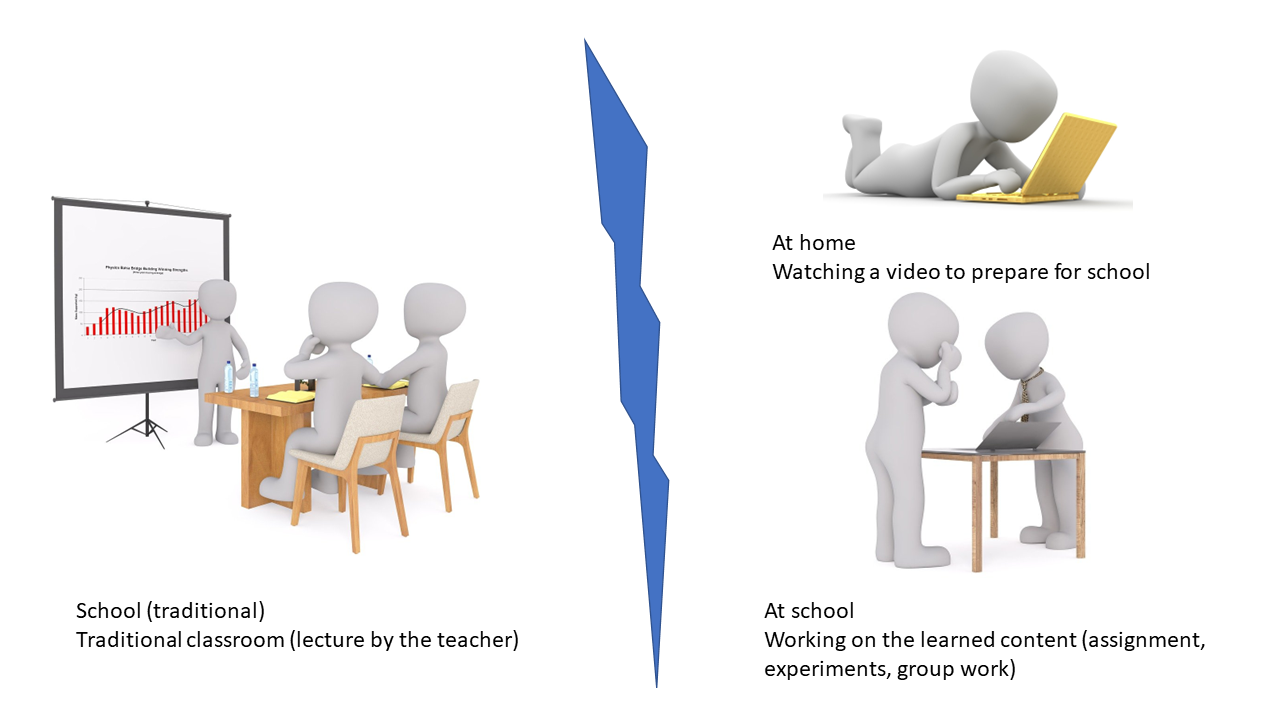
Comparison of the traditional classroom with the two major learning spaces in Flipped Learning (Source: Peter Mazohl, FAdE Erasmus+ project)
To the left, you see a typical classroom lecture: The teacher/trainer is teaching, explaining, and lecturing while the learners follow and take notes.
To the right, you see the two Flipped Learning situations: On the top, this is the individual learning space. It cares for the basic knowledge that is necessary to be able to contribute to the group learning space. The group learning space is shown below: Here, active learning is practiced.
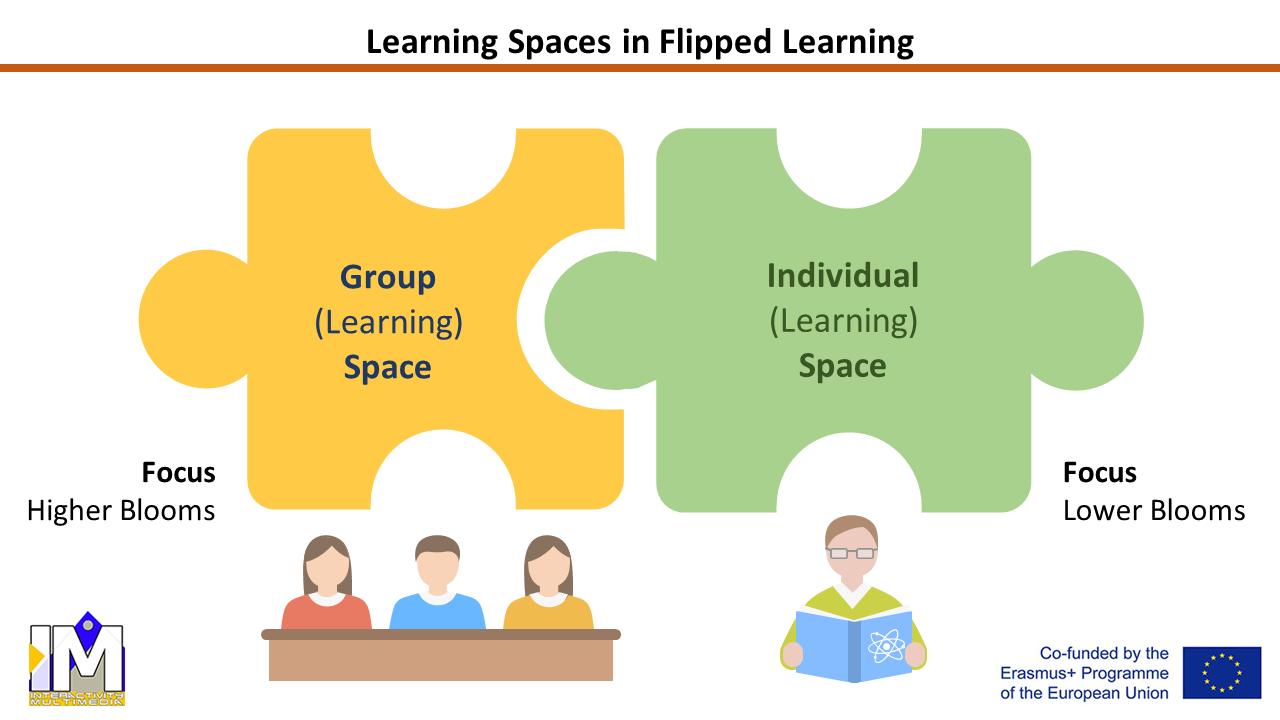
The major Learning Spaces in Flipped Learning 3.0: Check the connection between the Individual and Group Learning Space (Source: InterMedia Erasmus+ Project, Peter Mazohl).
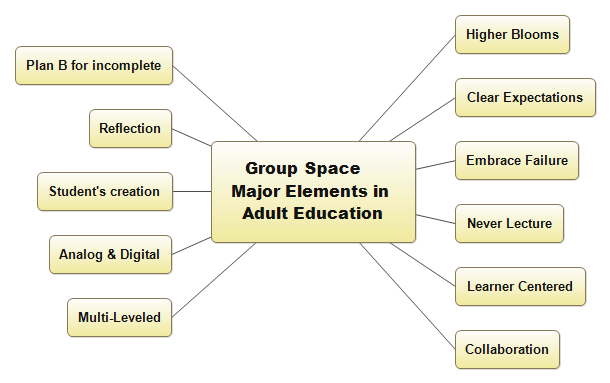
The sector “Group Learning Space” and the connected elements. The Group Space practices active learning, based on the pre-work done in the Individual Space.
You can see how the Individual and the Group Learning Spaces are connected. This needs well-done planning, structuring, and implementation of each Flipped Learning course!
Sources
1) Bloom, B. S., Engelhart, M. D., Furst, E. J., Hill, W. H. & Krathwohl, D. R. (Editor.). (1956). Taxonomy of Educational Objectives. The Classification of Educational Goals, Handbook I: Cognitive Domain. New York: David McKay Company, Inc.
2) Errol St. Clair Smith is the director of Global Development at Flipped Learning Worldwide and the architect of the Flipped Learning Global Initiative.

